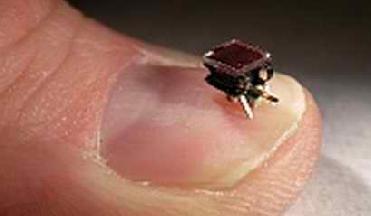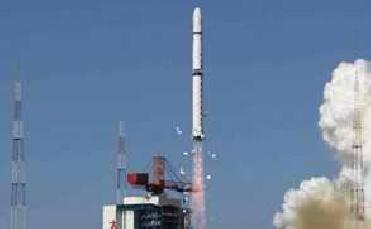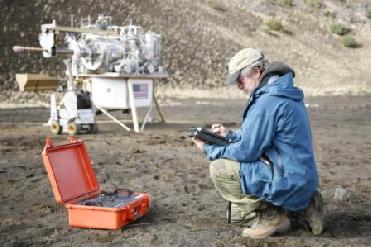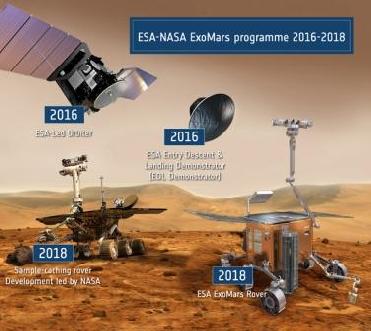
I-SWARM robots are able to communicate with each other and sense their environment
MUNICH (BNS): Scientists are looking at colonising Mars. Oh, not with humans but with swarms of tiny robots.
Marc Szymanski, a robotics researcher at the University of Karlsruhe in Germany said that work was on to see if small robots are able to work together and explore the planet.
“Small robots that are able to work together could explore the planet. We now know there is water and dust so all they would need is some sort of glue to start building structures, such as homes for human scientists,” Szymanski said.
Szymanski is part of a team of European researchers developing tiny autonomous robots that can co-operate to perform different tasks, much like termites, ants or bees forage collaboratively for food, build nests and work together for the greater good of the colony.
Working on the EU-funded I-SWARM project, the team created a 100-strong posse of centimetre-scale robots and made considerable progress toward building swarms of ant-sized micro-bots. Several of the researchers have since gone on to work on creating swarms of robots that are able to reconfigure themselves and assemble autonomously into larger robots in order to perform different tasks. Their work is being continued in the Symbrion and Replicator projects that are funded under the EU’s Seventh Framework Programme.
“Planet exploration and colonisation are just some of a seemingly endless range of potential applications for robots that can work together, adjusting their duties depending on the obstacles they face, changes in their environment and the swarm’s needs,” the scientists said.
“Robot swarms are particularly useful in situations where you need high redundancy. If one robot malfunctions or is damaged it does not cause the mission to fail because another robot simply steps in to fill its place,” Szymanski explains.
“That is not only useful in space or in deep-water environments, but also while carrying out repairs inside machinery, cleaning up pollution or even carrying out tests and applying treatments inside the human body, just some of the potential applications envisioned for miniature robotics technology,” the scientists said.
“Putting swarming robots to use in a real-world environment is still, like the vision of colonising Mars, some way off. Nonetheless, the I-SWARM team did forge ahead in building robots that come close to resembling a programmable ant,” the scientists said.
Just as ants may observe what other ants nearby are doing, follow a specific individual, or leave behind a chemical trail in order to transmit information to the colony, the I-SWARM team’s robots are able to communicate with each other and sense their environment. The result is a kind of collective perception, they said.
Explaining the working process, the scientists said that the robots use infrared to communicate, with each signaling another close by until the entire swarm is informed. When one encounters an obstacle, for example, it would signal others to encircle it and help move it out of the way, they said.
“A group of robots called Jasmine, which are a little bigger than a two-euro coin, use wheels to move around, while the smallest I-SWARM robots, measuring just three millimetres in length, move by vibration. The I-SWARM robots draw power from a tiny solar cell, and the Jasmine machines have a battery,” the scientists said.
Talking about the challenges faced by the project team, Szymanski said: “Power is a big issue. The more complex the task, the more energy is required. A robot that needs to lift something uses powerful motors and these need lots of energy.”
“Processing power is another issue. The project had to develop special algorithms to control the millimetre-scale robots, taking into account the limited capabilities of the tiny machine’s onboard processor: just eight kilobytes of programme memory and two kilobytes of RAM, around a million times less than most PCs,” they said.
The European scientists said that tests proved that the diminutive robots were able to interact, though the project partners were unable to meet their goal of producing a thousand of them in what would have constituted the largest swarm of the smallest autonomous robots created in the world.
However, the project leader is confident that the team is close to being able to mass produce the tiny robots, which can be made much like computer chips out of flexible printed circuit boards and then folded into shape. “They’re kind of like miniature origami,” Szymanski said.
Scientists said that simple, mass production would ensure that the robots are relatively cheap to manufacture. However, the researchers will be worried if one of them gets lost in the Martian soil.
 Previous Article
Previous Article Next Article
Next Article













The Indian Air Force, in its flight trials evaluation report submitted before the Defence Ministry l..
view articleAn insight into the Medium Multi-Role Combat Aircraft competition...
view articleSky enthusiasts can now spot the International Space Station (ISS) commanded by Indian-American astr..
view article